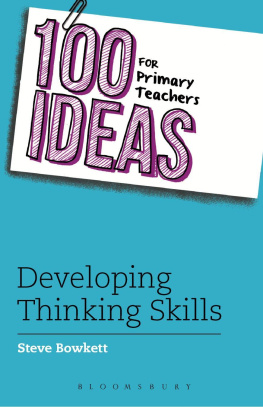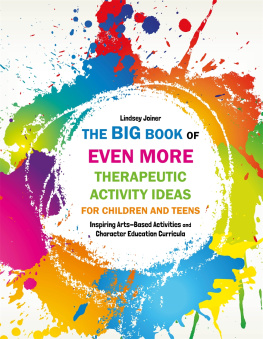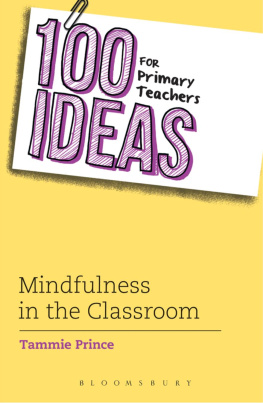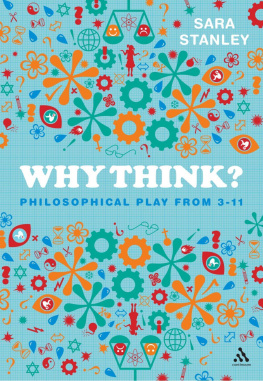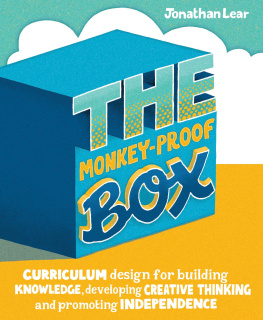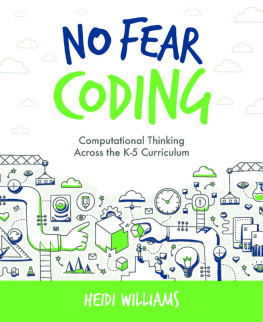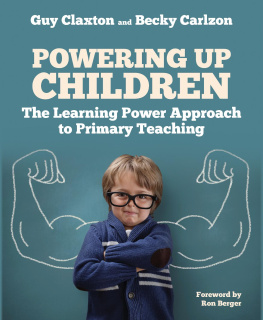100 Ideas for Primary Teachers
Developing Thinking Skills
Other titles available from Bloomsbury Education:
Breaking through Barriers to Boys Achievement by Gary Wilson
Getting the Buggers to Behave by Sue Cowley
How to be an Outstanding Primary School Teacher by David Dunn
Once Upon an If by Peter Worley
The If Machine by Peter Worley
To my wife Wendy who has always allowed me thinking time.
100 Ideas for Primary Teachers
Developing Thinking Skills
Steve Bowkett

Contents
Ideas
My thanks to my friend Tony Hitchman for his artwork and the many discussions weve enjoyed over the years. Thanks also to Sue Dixon of Thinking Child who has given me so many opportunities to think harder! Finally I want to acknowledge the enthusiasm and good humour of the children Ive met on my school visits in allowing me to field-test my ideas. You have taught me so much.
Thinking and learning go hand in hand. The more effectively children are able to think, the more they will understand the knowledge content of the curriculum and be able to link it to the world they live in and their own experiences. A further benefit of teaching thinking skills is that it helps to develop childrens self-confidence and leads to raised self-esteem. Children that are more confident in their thinking are increasingly likely to have a go when you ask for ideas and opinions or to play a more active role in group work and collaborative learning. They are also more inclined to question ideas and facts and will often ask for more information, both to deepen their understanding and out of interest. All of this will have a positive and long-lasting impact on the classroom environment.
This book offers a range of techniques and activities for showing children how to think in a variety of ways. The strategies and games can be taught individually or in combination and may be applied across the curriculum. You might use them as mind warm-ups at the start of a lesson or they could form the substance of the lesson itself. However you choose to use these ideas, youll find they work more powerfully if you keep the following points in mind:
- Make the thinking explicit. Explain to the children how the different kinds of thinking work. When children respond with ideas, point out to them how they are using their minds. Saying something as simple as, Youve given me four ideas about what the person in the picture might be saying. Thats a good bit of speculation allows every child in the class to further their understanding of that skill.
- Value the childrens thinking. They are still learning, so what might be an obvious idea to us could be a truly original insight to a child.
- Let the children do the thinking. That might seem an obvious point, but sometimes its hard for us as adults not to jump in with the right answer or spoon-feed the children if we see them struggling.
- Model the behaviour. Let the children see that youre thinking about the problem too and that you dont always have the right answer at your fingertips.
This book includes quick, easy, practical ideas for you to dip in and out of, in order to develop your students thinking skills.
Each idea includes:
- A catchy title, easy to refer to and share with your colleagues.
- A quote from a teacher or child describing their experiences of the idea.
- A summary of the idea in bold, making it easy to flick through the book and identify an idea you want to use at a glance.
- A step-by-step guide to implementing the idea.
Each idea also includes one or more of the following:
Teaching tip
Practical tips and advice for how and how not to run the activity or put the idea into practice.
Taking it further
Ideas and advice for how to extend the idea, develop it further, or set it as homework.
Bonus idea
There are 14 bonus ideas in this book that are extra exciting, extra original and extra interesting.
Online resources accompany this book and can be accessed at www.bloomsbury.com/100ideas-thinking-skills . Also, share how you use the ideas in the classroom and join the conversation using #100ideas.
I never knew you could get so many thoughts into such a small space!
Giving the children some WOW facts about the human brain is the first step in developing the classroom ethos of valuing thinking. It also helps children to realise that people think in many different ways and that there are various kinds of intelligence.
Ask the children to make their hands into fists and to hold them together in front of them, as if clutching something to look at it more closely. Tell them that this is roughly the size and shape of the human brain and that each hand represents a part, or hemisphere, of the brain.
Explain that the left part of the brain is more concerned with language, Maths and reasoning. It is the hemisphere where conscious thinking happens (thoughts I know I am thinking). The right part is more concerned with images, patterns, dreaming and making connections. In the right part, thinking is more subconscious: it occurs without me realising that it does. When ideas occur out of the blue, or when we suddenly remember something, the thought has come from the subconscious to the conscious half. The left hemisphere has been called the scientist part of the brain and the right hemisphere the artist part. Now give the children some WOW facts:
- The human brain is about 2% of our total body weight but uses around 20% of our energy. Thinking burns calories!
- Brain tissue is folded up in a very complicated way to pack it into your skull. The surface area of the brain is between 230-470 square inches.
- If you held a brain in your hands it would feel a bit squishy, like jelly. (Reference: www.brainhealthandpuzzles.com/ )
Taking it further
Make a wall display featuring a picture of the human brain. Invite the children to research and add more WOW facts. If you are a P4C (Philosophy for Children) school, combine these with related questions such as: Is the mind something different from the brain? What is a thought? Why do we dream?
This game is quick, simple and really helps children to realise how versatile their thinking can be.
Comparing the mind to people, places and objects gives children deeper insight into the range and power of their mental abilities.
To encourage children to get thinking about comparisons, introduce or revisit the idea of similes and metaphors. Explain that one benefit of making comparisons is to help us to understand difficult or abstract ideas. While the brain is a physical object or system, the mind is itself more of an idea. Making comparisons helps us to explore what it can do.
Use a few clear and obvious examples first. These might relate to other thinking activities the children have practised. For instance, you can relate the idea that The mind is like a spiders web because? to linking games that you have done previously with the class (for example, Link to think). But be careful here, with many creative thinking games, ideas are likely to come in a rush to begin with and then thin out. For each comparison, note the ideas and then explore them further afterwards.
So the mind is like a spiders web because?
Abby: Because it joins up all kinds of different thoughts and ideas.

